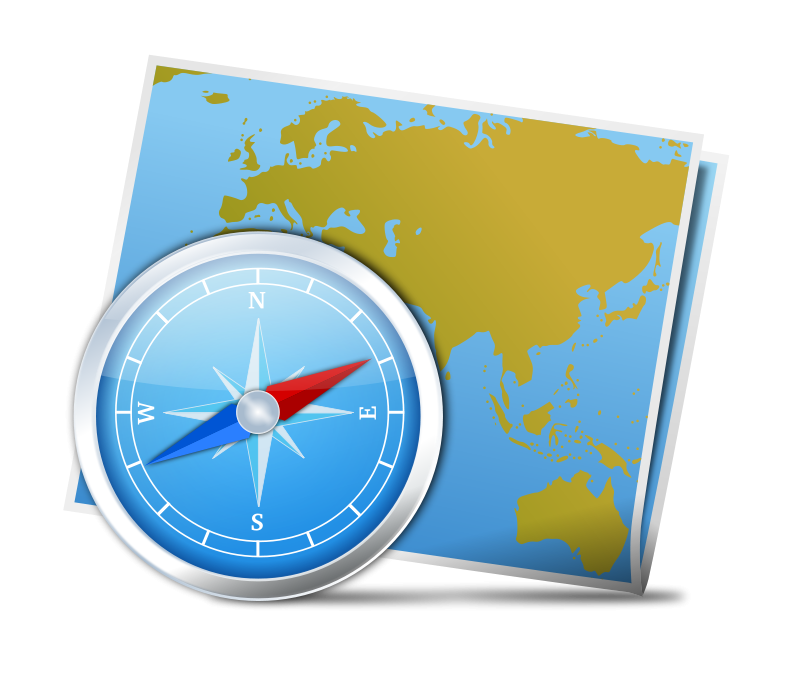I spent the first couple of days in Phnom Penh not achieving much, basically chilling out and sleeping a lot. After the travel of the previous few days I had booked into the nicest room yet on the trip, which still cost less than a dorm bed in a US hostel. BBC World gave me access to the news just at the point where Tony Blair got hit by the Claire Short UN bugging allegations. It was good to see him caught again on the actions surrounding the Iraq invasion, but frustrating that he seems to have got over this issue. Trying to pin this guy down is like trying to nail jelly to a wall.
The hotel was on the riverside, in a strip of bars and restaurants (including Phnom Penh’s famous Happy Herb Pizzas) catering to the expat, NGO and tourist crowds. Its a pleasant enough place for a meal and a drink, though it attracts a huge number of shoe polishers, newspaper sellers and beggers. I was surprised to realise that food and drink were roughly double the cost of what I would have expected in Laos. I suppose the greater number of monied tourists, plus the large number of NGO & UN staff have driven up prices in the past decade.
After a couple of days of dossing it was time to get back to the business of travelling. Firstly it was out of my luxury pad and into a good guesthouse just down the road at a quarter of the price. It was then off to the Tuol Sleng Museum, followed by the killing fields of Choeung Ek.
In 1975 Tuol Svay Prey High School was taken over by the Khmer Rouge and turned into Security Prison 21 (S-21). It became the largest centre of detention and torture in the country, with more than 17,000 people passing through between 1975 & 1978 before being taken to the Choeung Ek killing fields. We know what happened here as the Khmer Rouge kept meticulous records, photographing every prisoner, sometimes before & after torture. When the Vietnamese liberated the city in 1979 they found only 7 prisoners alive in S-21 and the corpses of 14 tortured to death as the forces closed in. The photographs of these victims are up in the rooms where they were found along with the furniture & equipment found at the time. Other parts of the prison retain the tiny cells built into former classrooms, racks of iron leg shackles and torture gallows. One long series of rooms displays the photographs of people who passed though this awful place. Apparantly a lot of work has been done to preserve the documentation from this place so that the crimes committed here aren’t forgotten, however this isn’t publically displayed. What is missing from the museum is the story of how the place came into being, how it functioned and how the prisoners came to be here. It is probably this lack of information that stopped me from being affected as much as I expected; it was this element that made the Holocaust Museum in Washington DC so effective. Make no mistake, this is a place everyone should visit and it will leave a lasting impressing all those that do. I didn’t take any photos here; it didn’t occur to me (I was so wrapped up in what I was seeing) and they wouldn’t have conveyed the atmosphere anyway.
The Choeung Ek killing fields are a few km away but also need to be seen. Of the 17,000 murdered here, 8985 were exhumed in 1980 from mass graves. 49 of the 129 communal graves were left undisturbed. What you see here are a large number of pits surrounded by fragments of human boen and bits of cloth. In the centre is a Memorial Stupa with glass walls containing more than 8,000 skulls. Its a very affecting place, though less so than S-21 and also lacks background information that I would have expected.
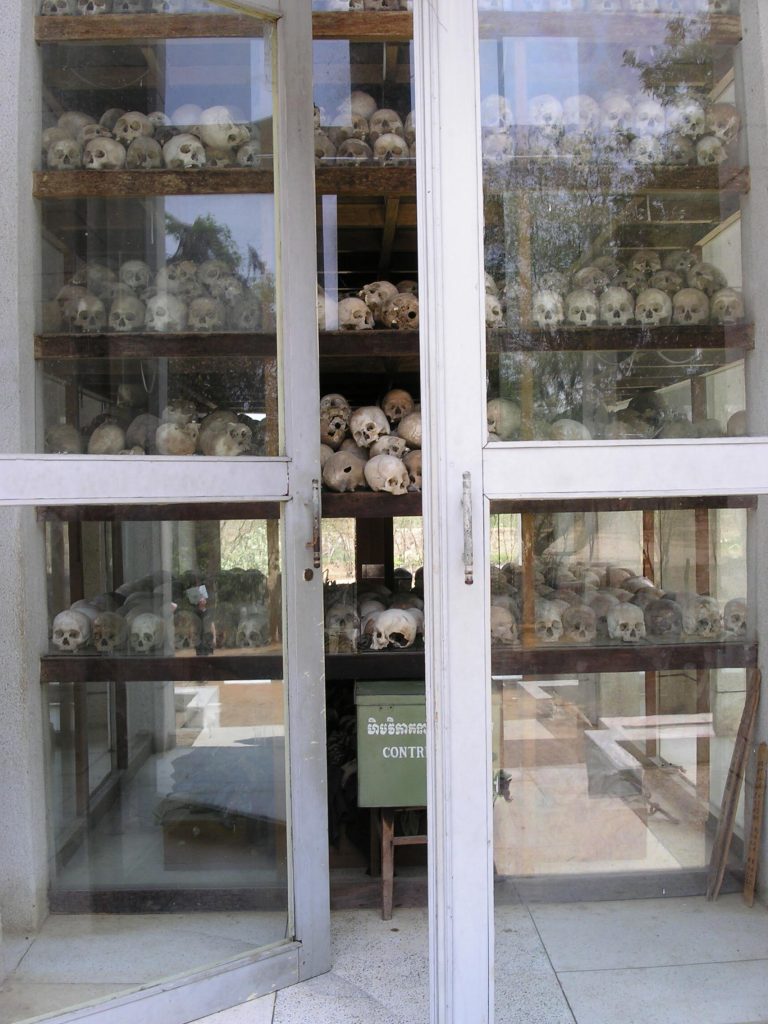
S-21 and Choeung Ek are a small part of the story of genocide that happened to this country in the 3 years, 8 months and 21 days of the Khmer Rouge rule. During that time it is estimated around 2 million people died, either in one of thousands of killing fields or through starvation and ill health. The Khmer Rouges rise to power was largely to do with the after effects of the Indo-China (Vietnam) war and the Americans disruptive influence in it. When the country was finally liberated from these genocidal maniacs it was by the Vietnamese. For years afterwards the Cambodian seat at the UN was filled by a Khmer Rouge official as the UN refused to accept the Vietnamese installed government. In the 1980’s SAS troups were sent to teach landmining techniques to one of the armed factions opposing the Vietnamese. All those factions, including the Khmer Rouge, were allied so its more than likely the UK supplied landming expertise was available to them. Cambodia has one of the worst landmine problems in the world and its something that will blight the country for decades to come. In the early 90’s the UN stepped in to create order in the country and bungled almost everything. As the pulled out hailing success none of the Khmer Rouge had gone to trial, none of the armed factions had been disarmed and the party that lost the elections still retained most of the power in the country. No nation in the world can have been so let down both by their own politicians and by those abroad. I’ll expand on this potted history when I can; Cambodia’s recent history is truly shocking and should be more widely known.
I also got round to visiting two of Phnom Penhs more famous markets, the Russian Market and Psar O Russie. The Russian market is more tourist oriented, but between the two of the you can buy almost everything : food, hardware, clothing, toiletries, PA systems, CDs, computer software (at $2 a pop)……..
On Tuesday I caught another express boat up the river to Siem Reap. It was another enjoyable 6 hours in the sun watching rural Cambodia pass by. The water must be really low as a few times the boat had to stop to allow the depth ahead to be judged by poles and then at the far end we transferred into a fleet of small boats to take us to land. In them we passed through an extensive floating village including restaurants and shops. I’d arranged to stay at the guesthouse twinned with the one in Phnom Penh so a motorbike taxi weas waiting for me. The initial 4km of the road is shocking, being an incredible bumpy dirt track. Its a crazy sight, my driver with my 18kg rucksack between his legs, me perched behind him all on a 100cc scooter. Before long we had a puncture so I waited at a shack for 15 min, drinking water whilst he zipped of to get it repaired.
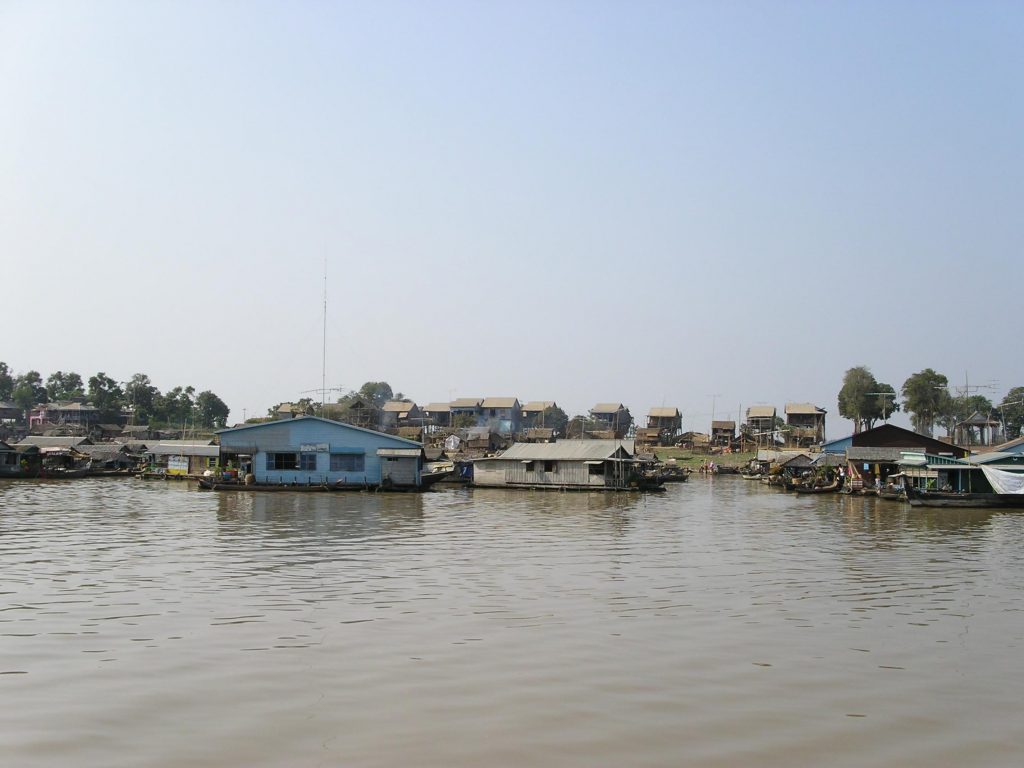
The next two days were spent exploring the temples at Angkor. Its hard to know what to write about a series of monuments this impressive, I’ll give some sizes so you can put some scale to the pictures.
The most famous is Angkor Wat. Its surrounded by a 190m wide moat measuring 1.5km by 1.3km, inside which is a wall. At the heart is the temple complex in five tiers, on which the highest has 5 towers, the centre one 55m in height from the ground. Reaching the core temple is via some scarily steep and tall stairs. I saw one Asian lady attempting them in heels and had to look away…. The outside of the entire first level is surrounded by 8 main bass relief carvings each 7 ft high and around 100m long.
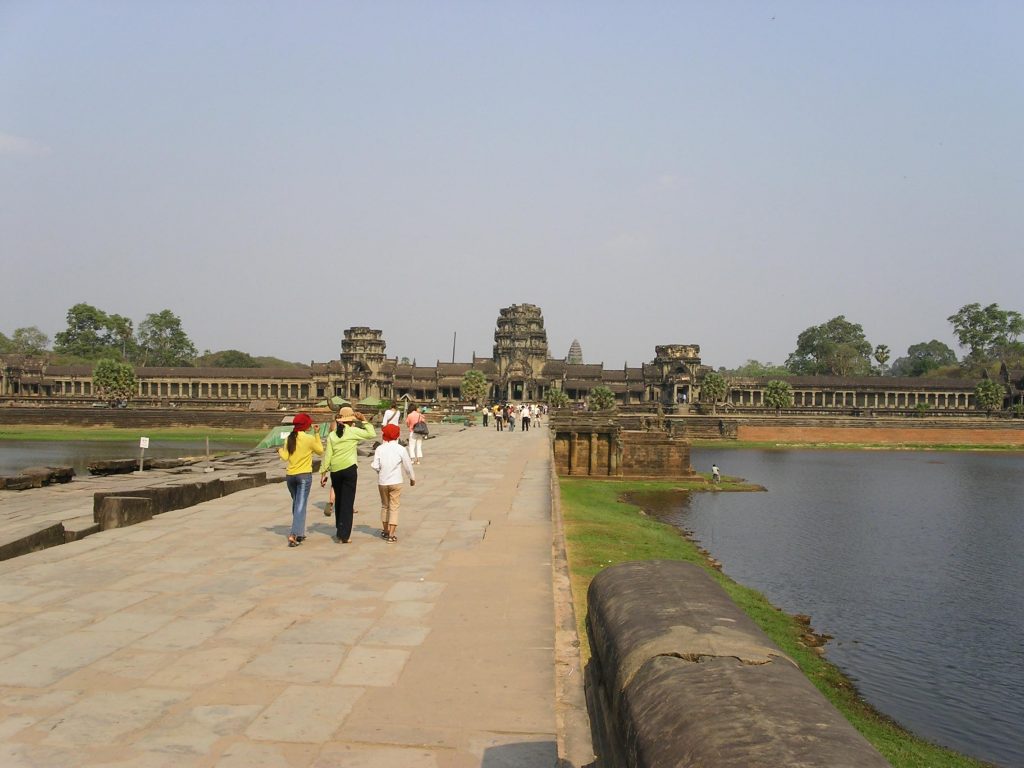
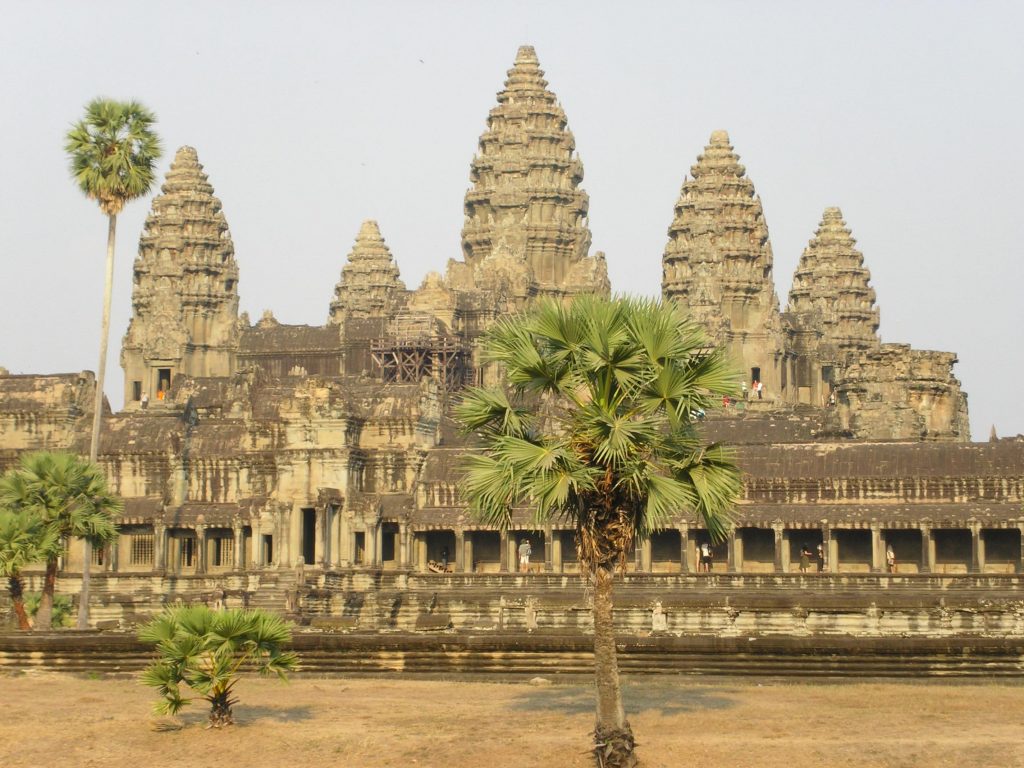
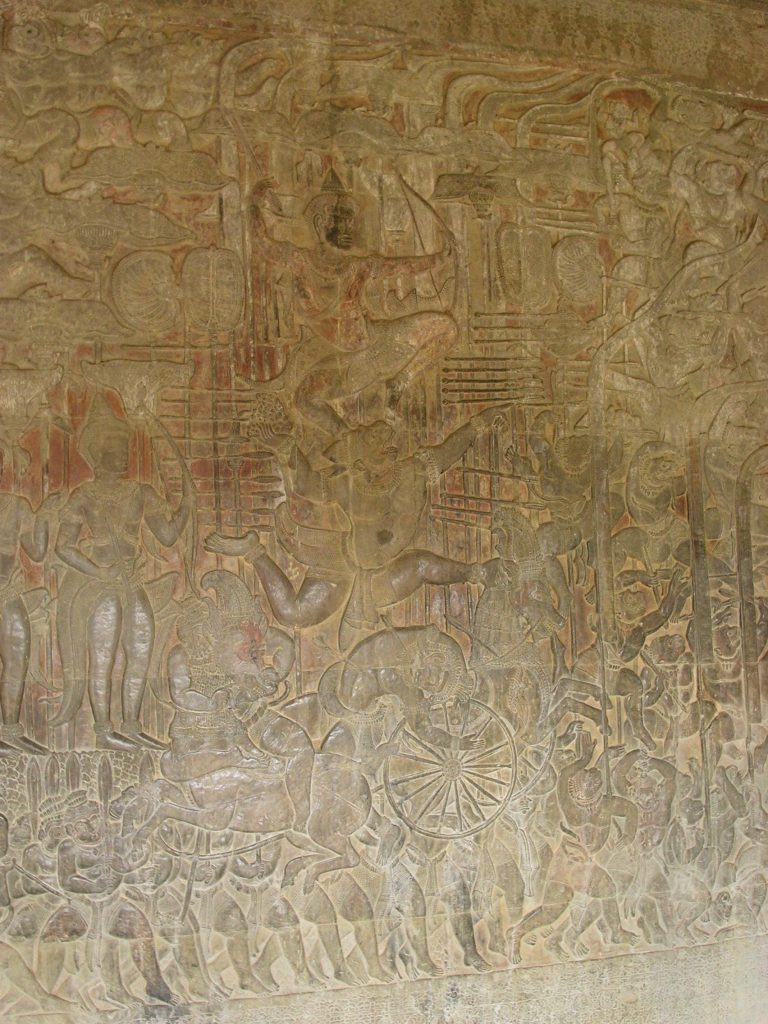
Angkor Thom is just north and was the previous Khmer capital. It is surrounded by wall 8m high and 3km along each side, outside of which is a 100m wide moat. It has 5 huge gatehouses, each 20m high. Despite their size the fortifications do not look particularly defensive, lacking all the small features such as arrow slots and ballistrades you would expect on European equivalents. This might be why the Siamese were able to capture it so often, leading to abandonment in favour of Phnom Penh. Inside Angkor Thom are a huge number of impressive monuments, the most significant of which is the Bayon. This has 54 gothic towers decorated with 216 gargantuan faces.
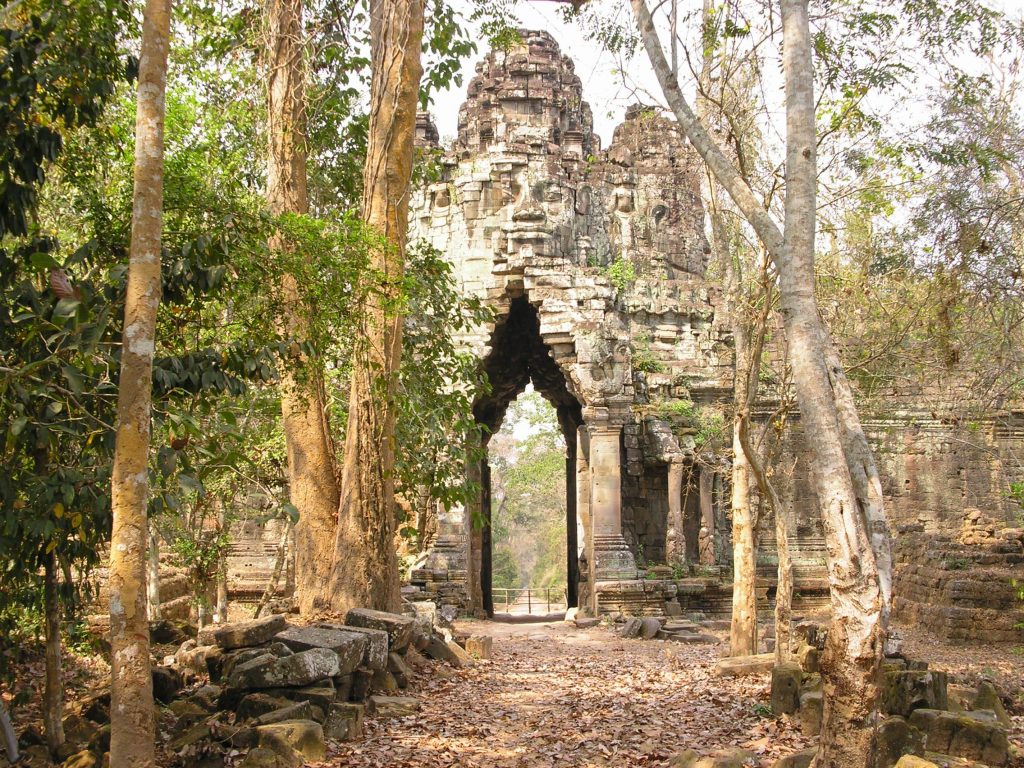
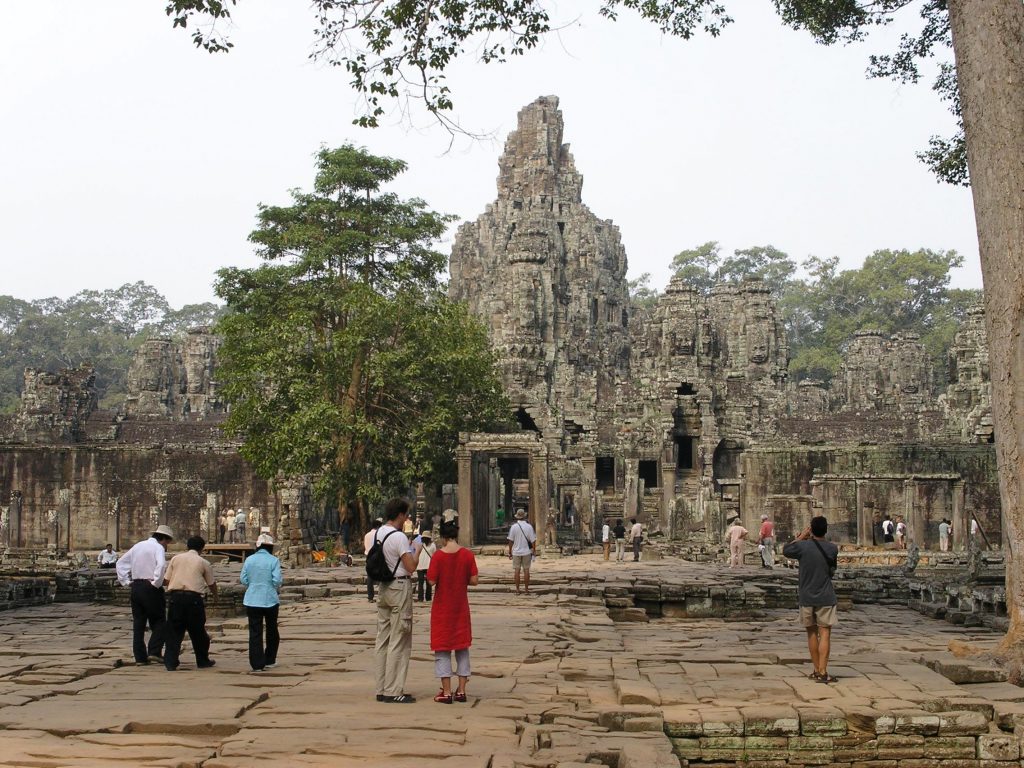
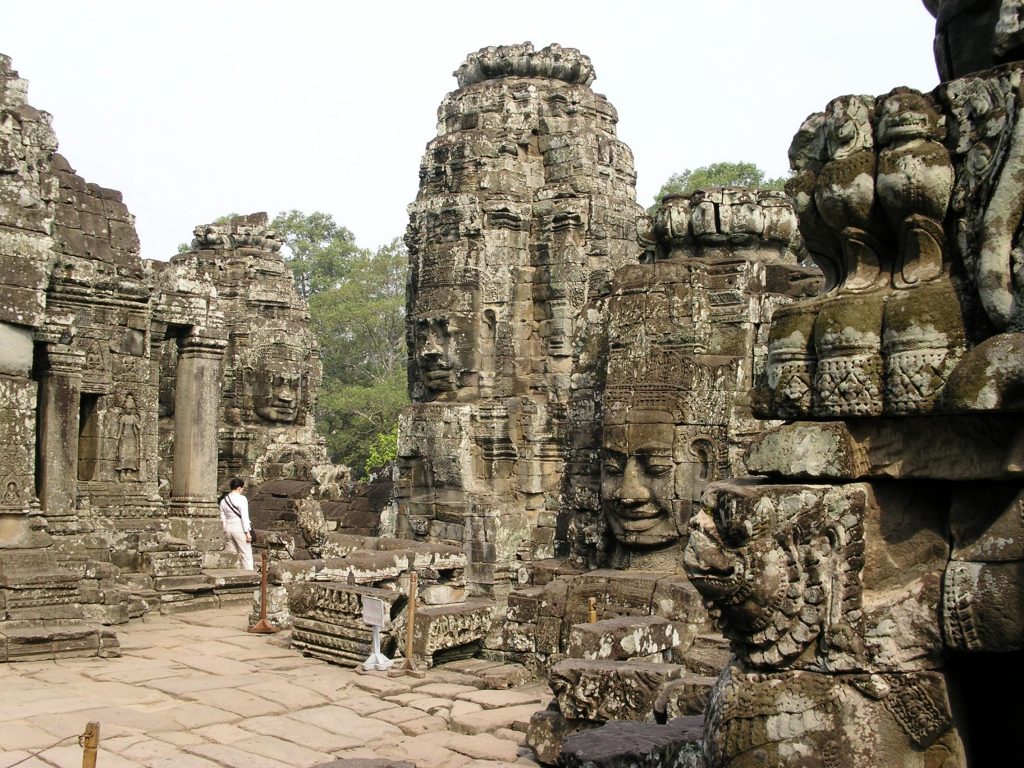
Highly atmospheric is Ta Prohm which has been left partially swallowed by the jungle. This is real Indiana Jones / Tome Raider territory with trees growing up through buildings and vast roots systems growing over and through walls. It was here I spotted one of the most famous Cambodians to foreigners. The front cover of the current Cambodian Lonely Planet shows an old guy with a broom emerging from a door surrounded by roots. He’s still there.
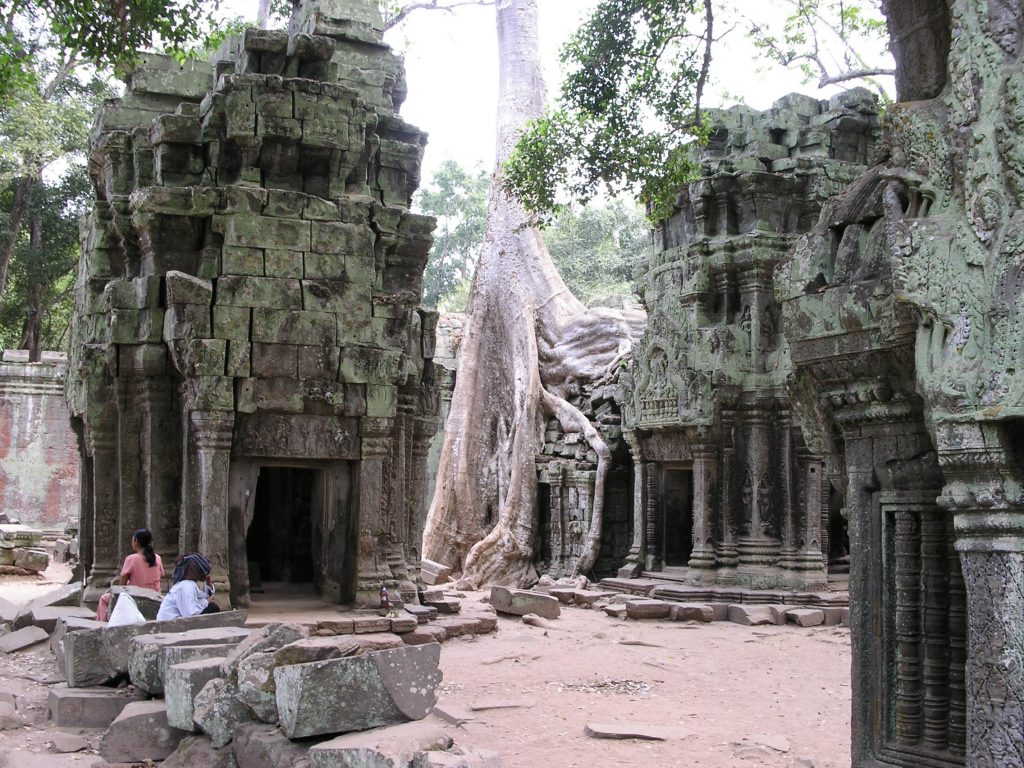
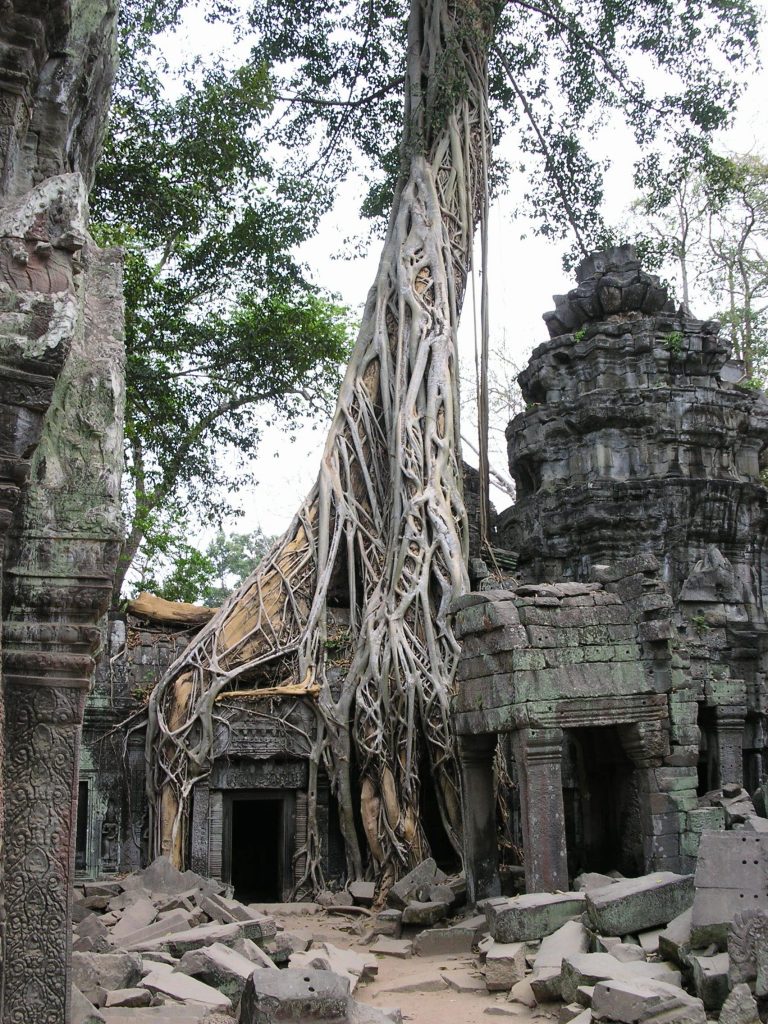
I saw a huge number of staggeringly impressive temples in the two days I was there but the final lasting impression was of an artificial lake, The Western Baray. Its perfectly rectangular and is 8km by 2.3km. How on earth did they manage to create a lake that huge with the technology they had at the time (1000 ADish).
Within a few hundred years of completing the most impressive of the monuments the Khmer empire went into decline. Possibly the effort of building them may have been the catalyst for this by stretching their resources too far. The Angkor area was abandoned to the jungle to remain relatively unknown until the arrival of the Europeans. What it must have been like to discover someting of this scale I can’t imagine. It is said that Angkor rivals Egypt’s pyramids and has to be visited if you come to Cambodia.
Not far away is a landmine museum, run as a charity and providing education to children injured by the mines. There is a huge collection of different mines and other ordinance here. Many of them have their page from the Janes guide mounted above them and it makes chilling reading as someone describes the weapon in unemotional techical detail. Many of the mines found are little plastic anti personnel mines copied from an American design by the Vietnamese. About the size of a coffee jar lid being plastic they are really hard to find and will destroy a limb. Its worth remembering this because like Laos, Cambodia is full of mines and UXO and will be for decades to come. If you are somewhere remote don’t head off the trail.
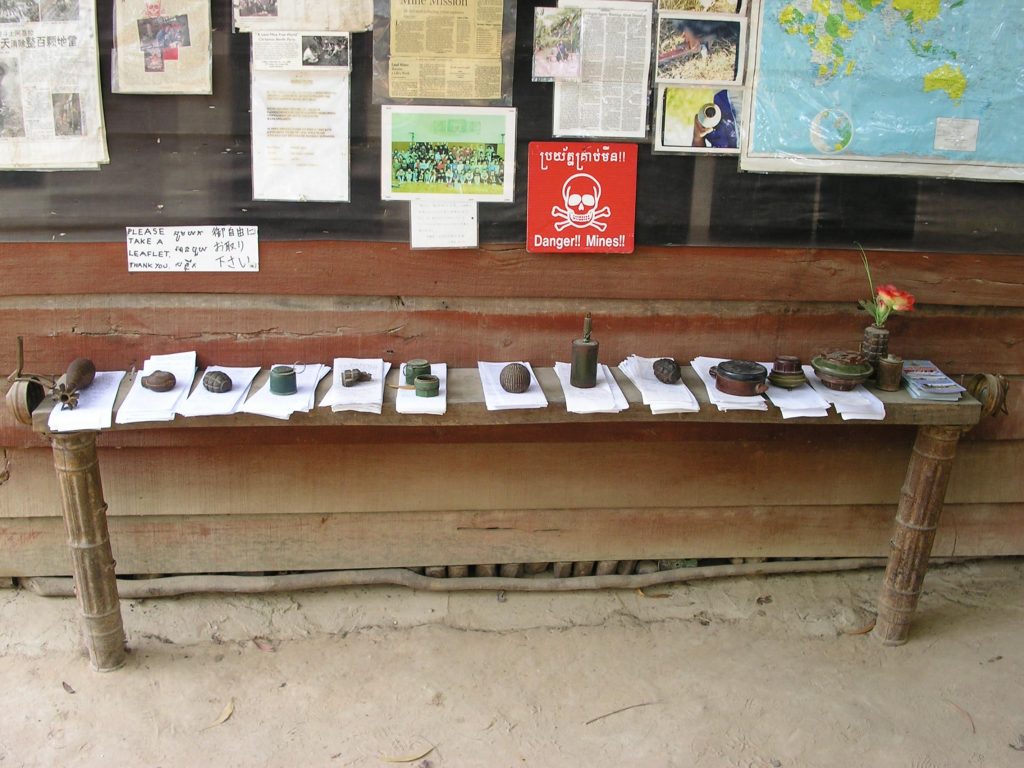
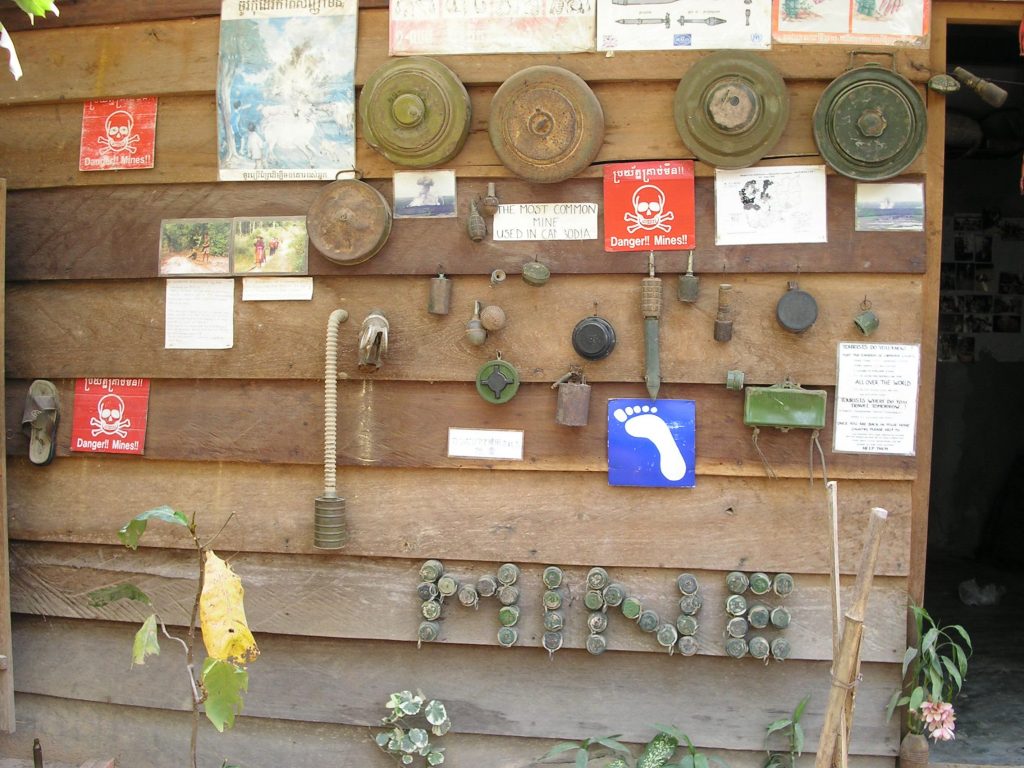
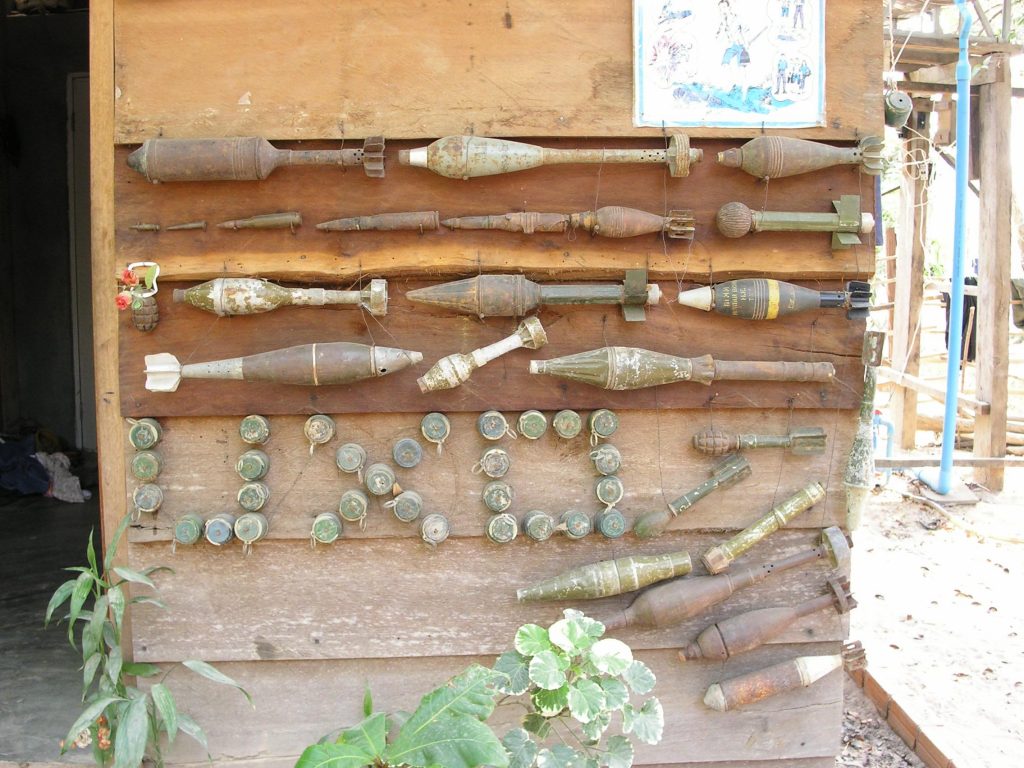
Siem Reap itself is a pleasant place to spend some time with a good selection of restaurants and bars. However, news of Angkor has got out and luxury hotels are springing up at an incredible rate. The local airport provides direct access to several major local airports including Bangkok and tourist numbers will probably grow enormously over they coming decade. Get here before it gets worse.
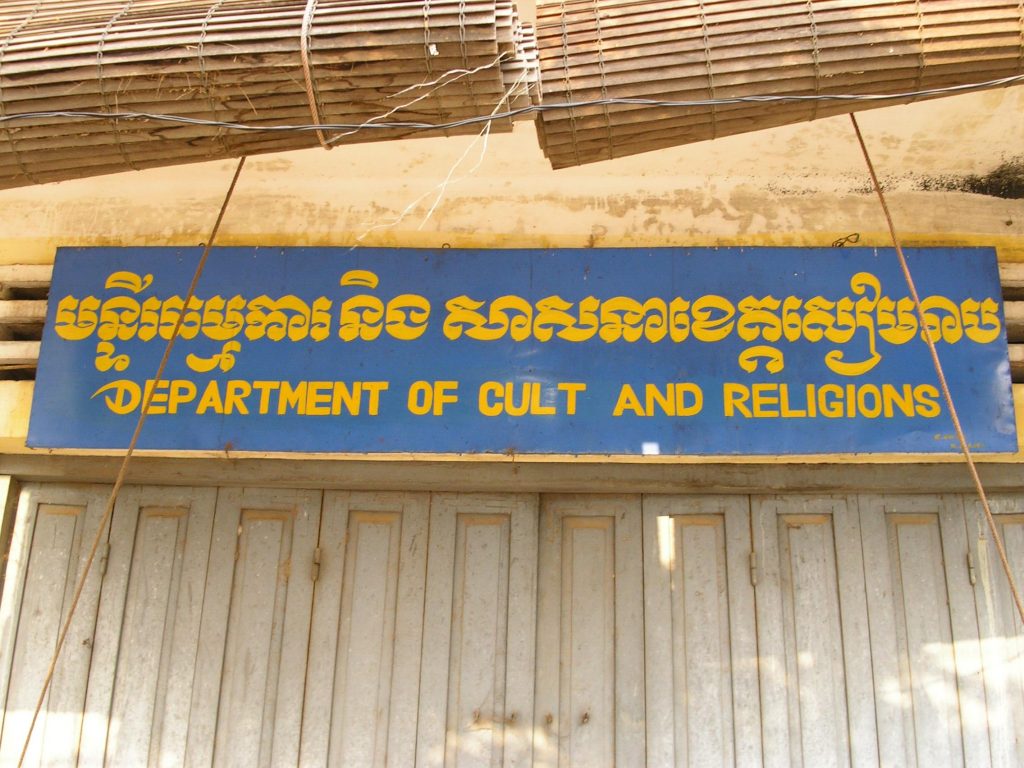
The plan is to head back to Phnom Penh tomorrow, then off to the south coast a few days after that.
